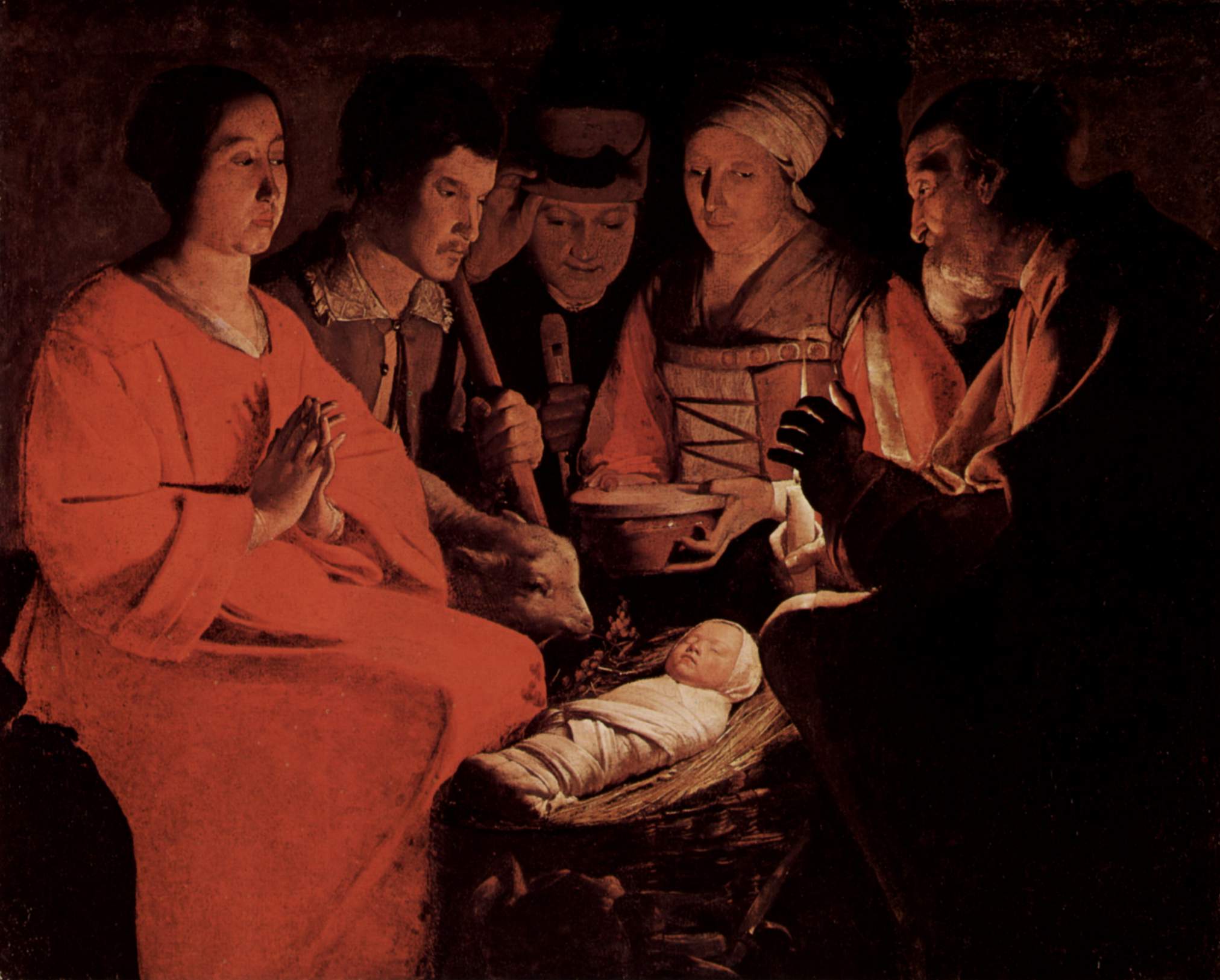Following on from last weeks entry, this week we take a look at 16th, 17th and 19th century European depictions of Christ’s birth.
Adoration of the Magi and The Adoration of the Shepherds, El Greco 1568 and 1614

In the case of El Greco, the nativity offers us a fixed subject, through which we can see a transformation in style. Being such an important and famous religious story, the Nativity is often painted several times by many painters. El Greco painted an ‘Adoration of the Magi’ scene in 1568, and then later completed an ‘Adoration of the Shepherds’ scene.
The first of these, now residing in Mexico City’s Soumaya Musuem, is much more conventional, with clear inspirations taken from El Greco’s Cretan early years, but already beginning to take inspirations from the western works that he would have seen on moving to Italy in 1567. The Kings around Jesus, and Mary herself are relatively accurately proportioned, with their poses being natural, or at least make sense perspective ly. The almost unidentifiable animals in the background of the scene, (perhaps horses, perhaps camels) begin to give a hint at the bizarre and extremely distinctive style he would later adopt.
ly. The almost unidentifiable animals in the background of the scene, (perhaps horses, perhaps camels) begin to give a hint at the bizarre and extremely distinctive style he would later adopt.
The second possesses a style much more recognisably that of El Greco’s. Influenced by the Mannerist artists he surrounded himself with on moving to Italy, his exaggerated forms, although stationary, appear to dance due to the intense attention El Greco pays to sculpting muscle and limb.The bold colours are amplified by the dark backgrounds, with general contrast being used to create a drama, accentuated by the dramatic light appearing to emanate from the Christ Child Himself. The painting itself is a smaller version of one that El Greco painted to be placed above his own tomb, showing the importance the image held for him.
Nativity, Georges de La Tour 1644
 Like El Greco, La Tour painted several nativity scenes, each in his instantly recognisable style. One of the first examples is the ‘Nativity’ (1644), an intimate and realistic depiction of Jesus in his manger, surrounded by those who assembled at his birth. The shadows and highlights are realistically rendered with the intensity typical of the Baroque. The colours, like Greco’s, are rich but act in a way that creates a warmth rather than a active vibrancy. The only light source in the painting is admitted from a candle almost entirely concealed by a hand, so it initially appears the source of light is Christ himself. This seems to be La Tour allowing the picture to possess both a realism, and religious symbolism. He uses the same technique in a painting also featuring Christ, a year later, ‘The New Born Christ’ (1645-48).
Like El Greco, La Tour painted several nativity scenes, each in his instantly recognisable style. One of the first examples is the ‘Nativity’ (1644), an intimate and realistic depiction of Jesus in his manger, surrounded by those who assembled at his birth. The shadows and highlights are realistically rendered with the intensity typical of the Baroque. The colours, like Greco’s, are rich but act in a way that creates a warmth rather than a active vibrancy. The only light source in the painting is admitted from a candle almost entirely concealed by a hand, so it initially appears the source of light is Christ himself. This seems to be La Tour allowing the picture to possess both a realism, and religious symbolism. He uses the same technique in a painting also featuring Christ, a year later, ‘The New Born Christ’ (1645-48).
Flight to Egypt, Carl Spitzweg 1875-1879

Painted between 1875 and 1879 Spitzweg depicts the flight Joseph and Mary made with the newly born Christ, to Egypt. He was most well known as a painter of ‘genre’ scenes, scenes that focused on the everyday life of ordinary people. However, he was also a Romanticist combining dramatic landscapes with the small lives of the average people he depicted. This painting is typical in all these respects, reducing Jesus and his family to the bottom third of the canvas, with the rest being taken up by the dramatic cliffs on either side of them. There is no heralding of angels, no halos, but instead three apparently mortal beings surrounded by what appears to be inhospitable nature. This paradoxically gives the ordinarily-depicted family, a power and importance, as they have the means and bravery to journey through such a landscape.



